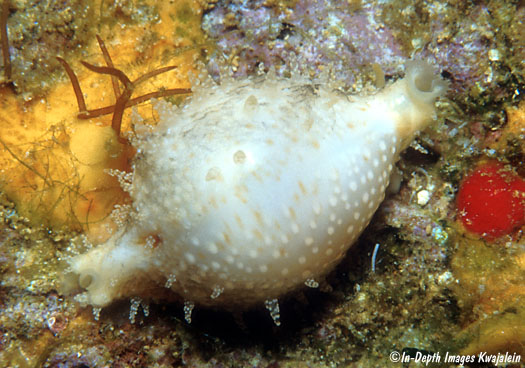
Pustularia cicercula is distinguished from the other chick peas by its bumpy, white to cream-colored dorsum. The bumpiness, however, is somewhat variable and at one end of its range of variation, the shells appear to intergrade with those of P. margarita, which is considered by some to be a variation of P. cicercula. However, the two species (or forms) differ in habitat preference. Pustularia cicercula is most common buried deep in rubble on certain lagoon pinnacles or in caves at night in those same areas, where P. margarita is rather rare. Smaller specimens of Pustularia cicercula are occasionally found in seaward reef surge channel caves, but the species is much less common in that habitat than Pustularia margarita. Most specimens are seen between the depths of about 6-23m. Both P. cicercula and P. margarita appear to have similar wide Indo-Pacific distributions. The subspecies in the Marshall Islands is Pustularia cicercula cicercula.

The mantle quite effectively hides the shell.
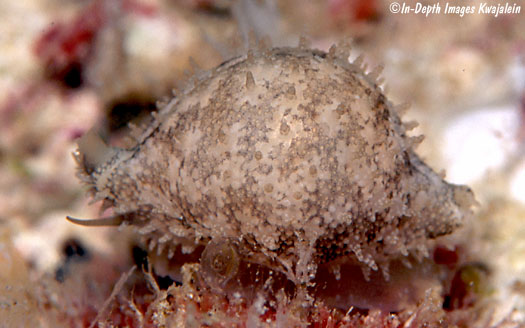
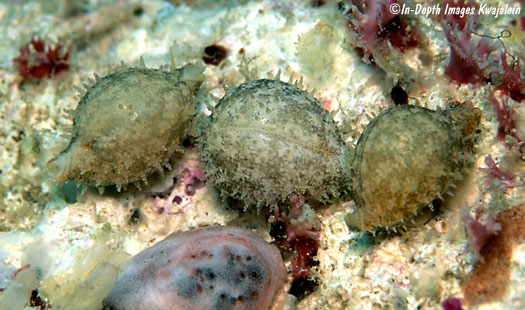
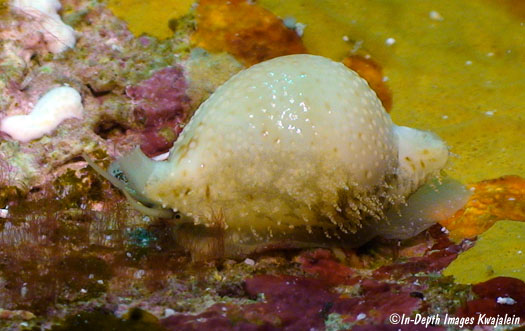
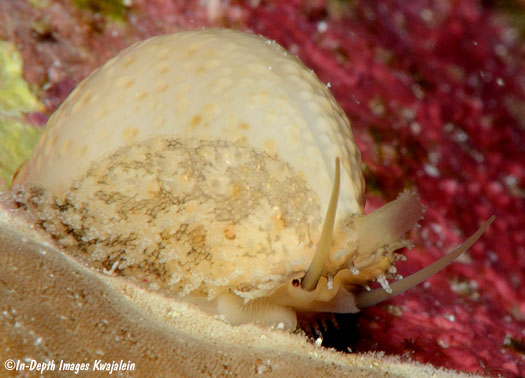
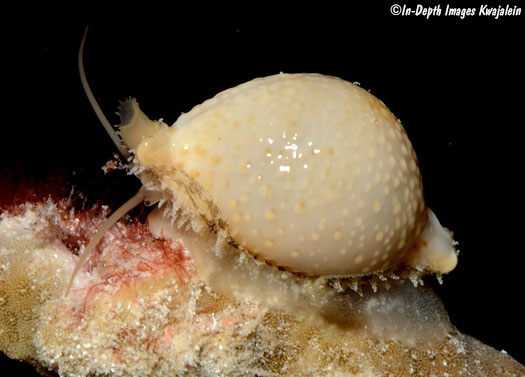
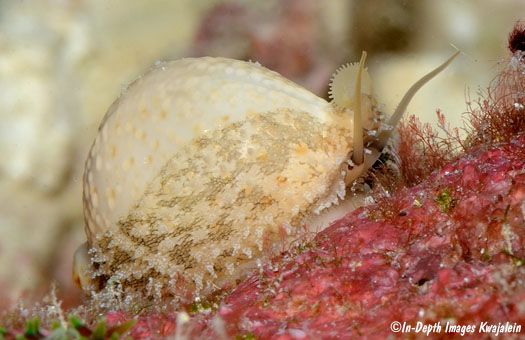
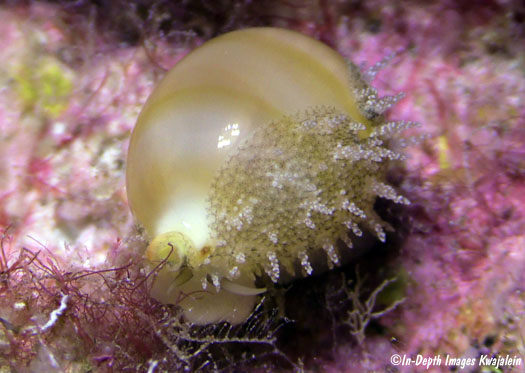
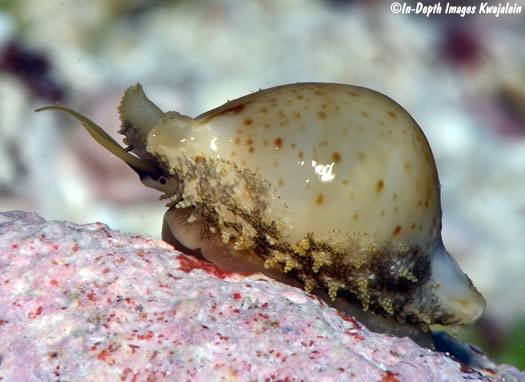
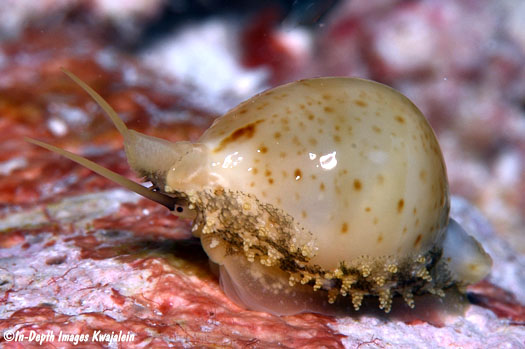
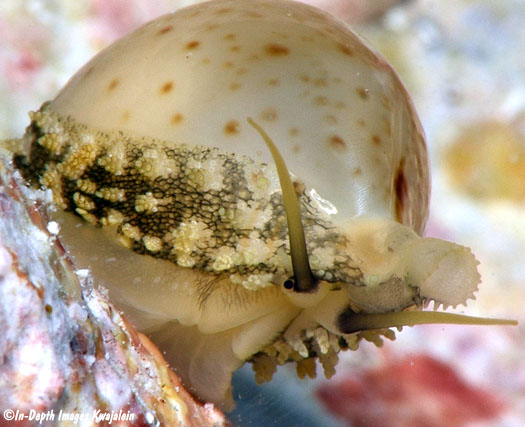
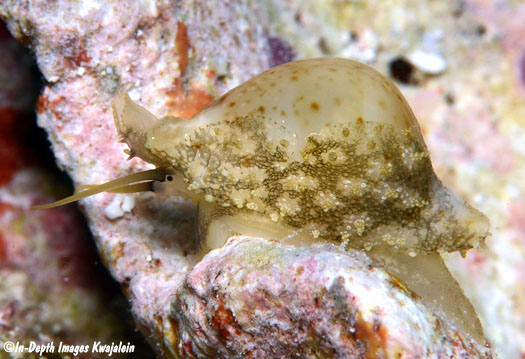
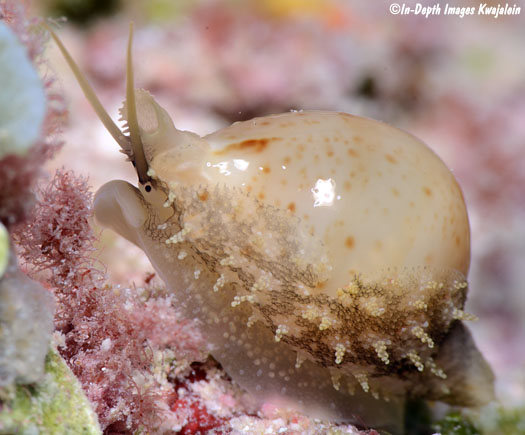
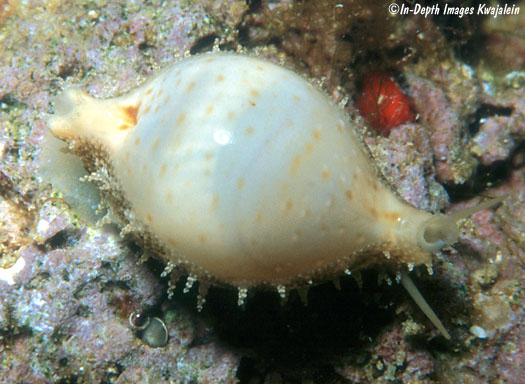
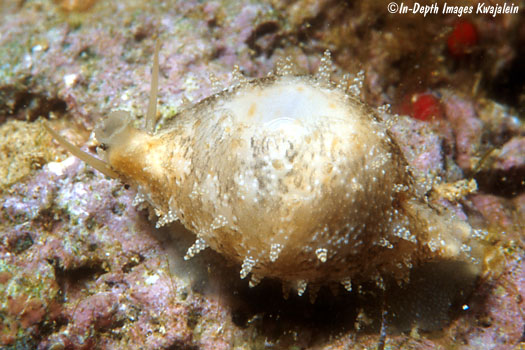
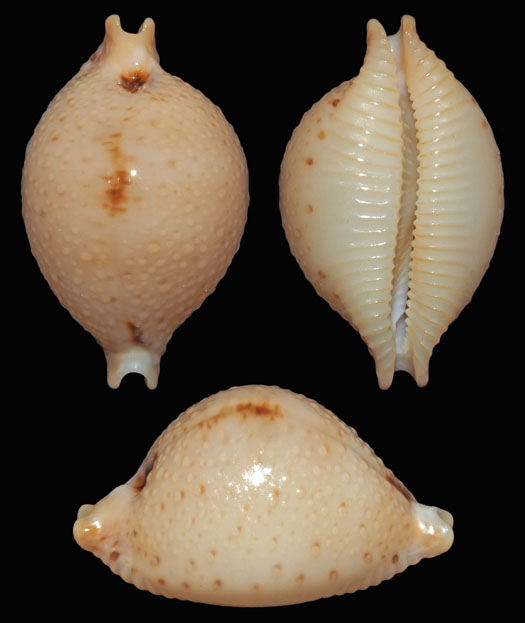
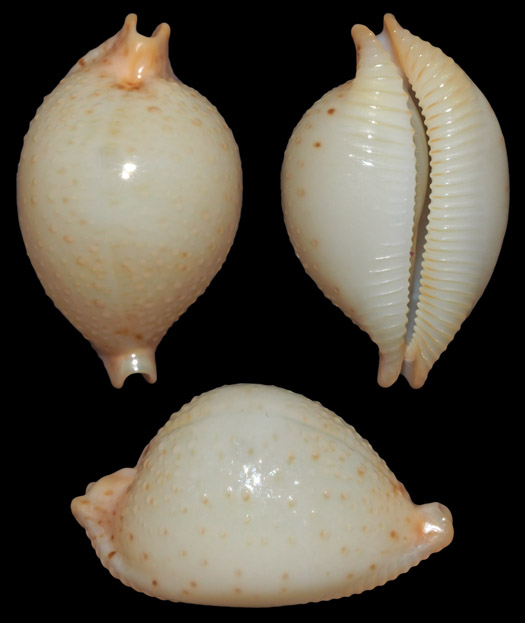
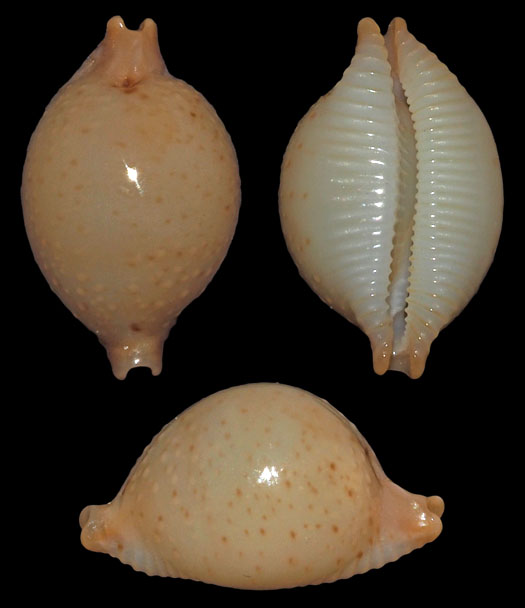
A comparison of the four Pustularia
species found in the Marshalls: upper left P. cicercula, 20.9mm; upper
right P. margarita, 17.95mm; lower left P. bistrinotata, 18.35mm;
and lower right P. globulus, 17.7mm.
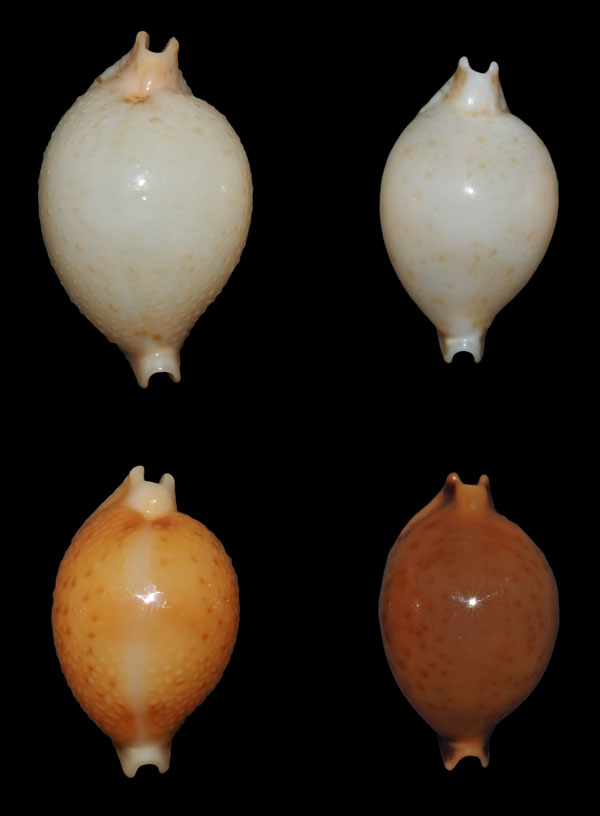
Updated 13 May 2024